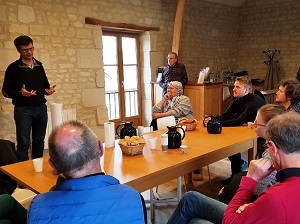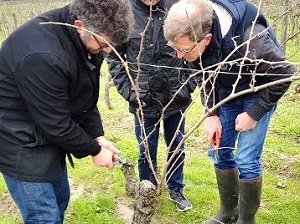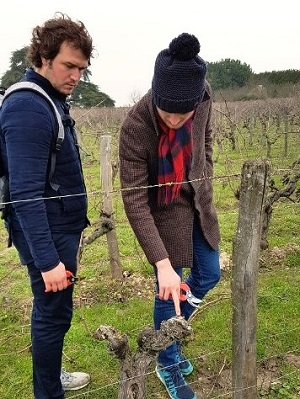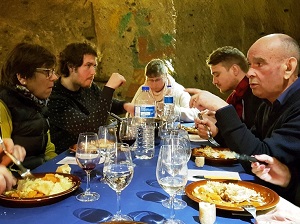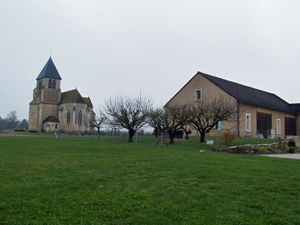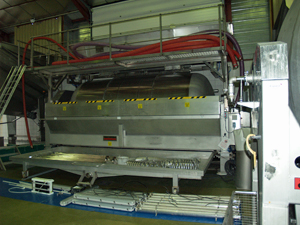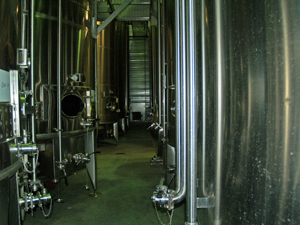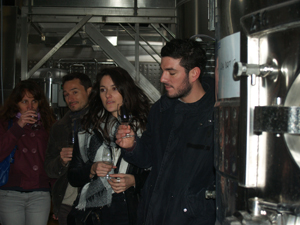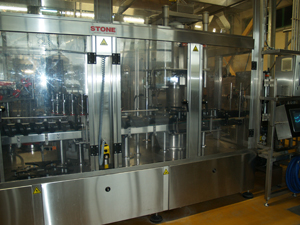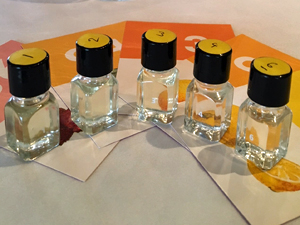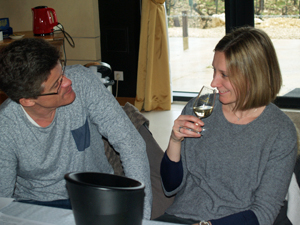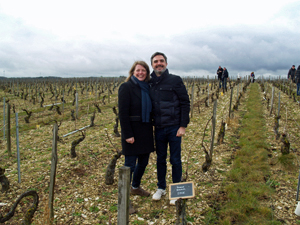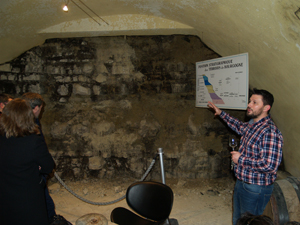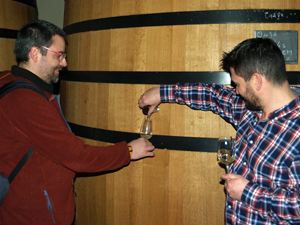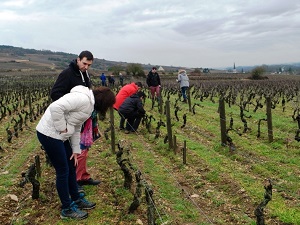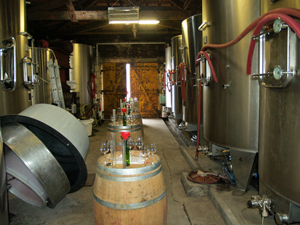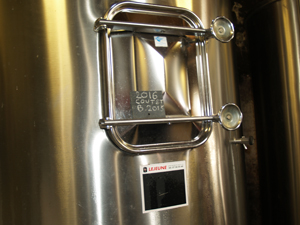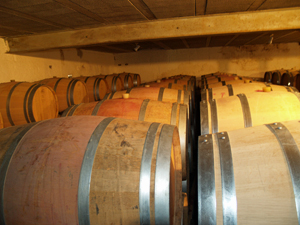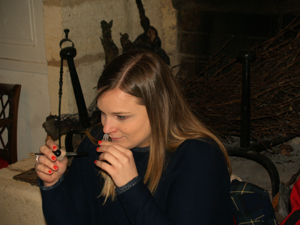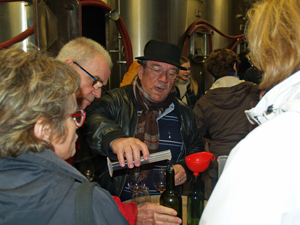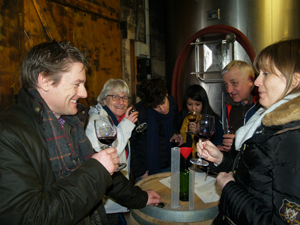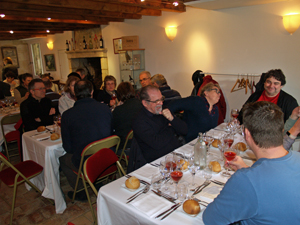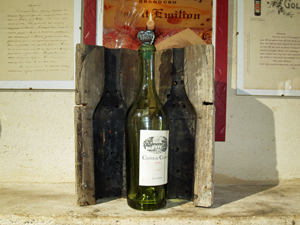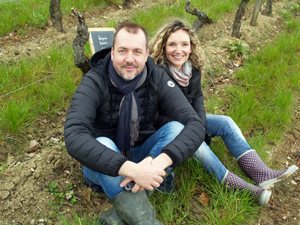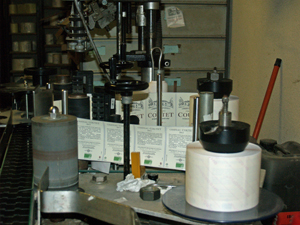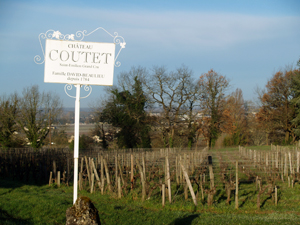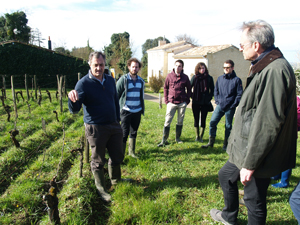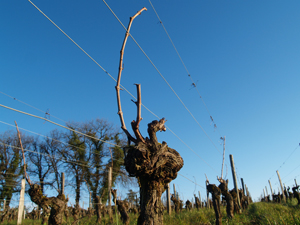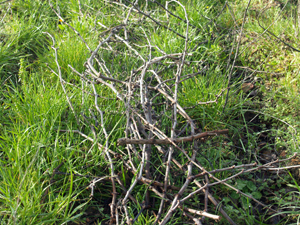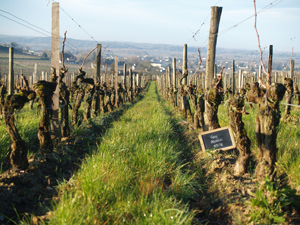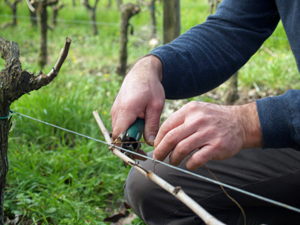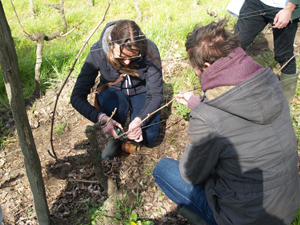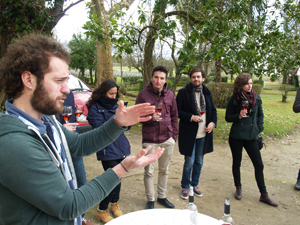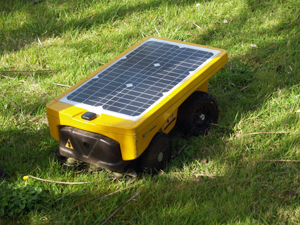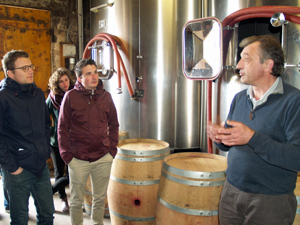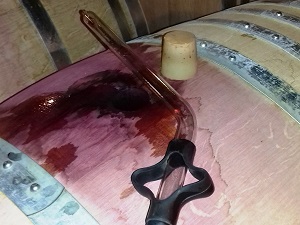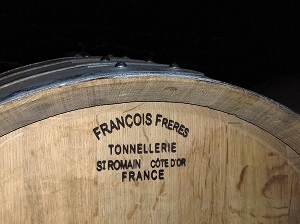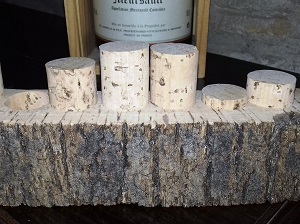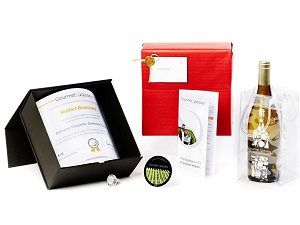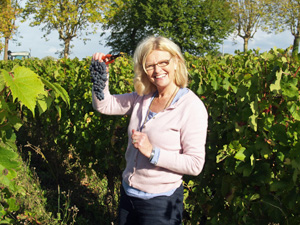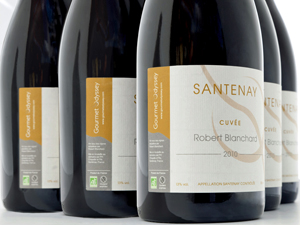As spring begins, so a new cycle gets ready to start in the vineyard. There is much that the winemaker needs to do to nurture the vines and help them produce the best possible grapes for the coming harvest, as we were to learn during the Discovery Experience Day at Domaine Stentz-Buecher in Alsace.
After the introductions, we made our way to the Rosenberg vineyard, the plot where the adopted vines of the Gourmet Odyssey Wine Experience are to be found. To get in some training for the Easter egg hunt to come next weekend, we spread out amongst the rows to find the nameplate that marks the exact location our micro plot of adopted vines!
Accompanied by Céline and her father, Jean-Jacques, winemakers at Domaine Stenzt-Buecher, we listened intently as we learnt about pruning the vines, which is the most difficult but most important of the jobs in the vineyard as it limits the potential quantity of grapes that will be produced and helps controls the shape and form of the vines growth. It is long job that takes up most of the winter months, but March marks the end of the pruning season as it has to be finished before the sap rises again.
Jean-Jacques had left a few vines for us to work on. Intellectually it is quite easy to understand the principals of pruning, but as we were to quickly find out, when you are the one standing in front of the vine and having to choose which branches to cut and which to leave, it suddenly becomes much more complicated!
The vines at Domaine Stentz-Buecher are pruned using the Double Guyot method. This involves leaving one long branch of six to eight eyes on either side of the vine and a spur, from which the branches used for the following year’s harvest will grow. When selecting which branches to keep, you need to take several factors into account. The lower branches are preferred to minimise the distance that the sap needs to flow, and to keep the vines at the same height as the neighbouring plants. Branches that grow along the same line as the training wire are favoured over ones that stick out into the middle of the passage between the rows, as these branches are more likely to get damaged by the passing tractor. The number of eyes left on the vine depends on its age and health...
Once the branches to be kept have been selected, all of the other branches are cut away. The next job involves pulling away the old wood from the trellis system, and putting the branches in the middle of the rows, a job that we all got stuck into with vigour! The branches will then be crushed to return nutrients to the soil.
Jean-Jacques then showed us how to arc and attach the remaining long branches to the bottom training wire using a great little tool that twists and cuts the wire, saving lots of time from having to hand tie each branch.
We also learnt about replacing vines, and visited a plot that had been replanted 3 years ago. Jean-Jacques talked about working the soil, and showed us where the earth had been heaped around the vines to protect them from the cold winter months. We finished the morning with a quick look at some of the tools and machinery that is attached to the tractor to help with the work in the vineyard.
After the full morning spent in the vineyard, we had earned our wine tasting. Céline and Stéphane, took us through a selection of the different wines produced at the winery starting with a Muscat 2015, followed by a Riesling Ortel 2014 and the 2015 vintage of the Pinot Gris Rosenberg wine chosen for the Gourmet Odyssey Wine Experience. We then tasted the Pinot Noir 2011 and Gewurztraminer Steingrubler 2015 Grand Cru, accompanied by a savoury Kouglof, a delicious Alsace specialty.
Over the lunch of typical Alsace dishes and cheeses, we continued the wine tasting with the Who Am I? wine, a blend of pinot blanc, pinot gris and Riesling grape varietals, and different vintages of the Pinot Noir and Gewurztraminer wines.
After lunch, we headed back out into the vineyard to learn about the work that remains to be done in the vineyard over the coming months to de-bud the vines, raise the training wires, remove some of the leaves depending on the weather, trimming the vines, and to discover how the moment the grapes are harvested is chosen. Stéphane also explained to us how the vines are treated organically to help protect them.
The day finished with a quick tour of the cellar to see where the grapes are pressed and where the wines ferment and are aged before being ready to be bottled. We’ll be spending more time here during the Harvest and Vinification Experience Days. But in the meantime, the winemakers will be busy in the vineyard over the coming weeks, as the temperature rises, and the vines burst into life.



